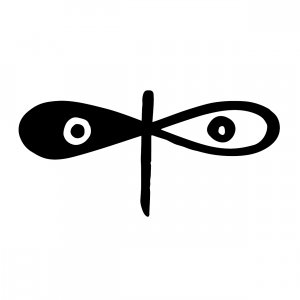
Ximena Rodriguez Bradford
Author's books
Charlotte Perriand
pages: 168 pages
Architect, designer and emblematic figure of modernity, Charlotte Perriand (1903-1999) devoted her life to the art of living. After a long association with Le Corbusier, she developed a uniqueness of vision with which she succeeded in imposing herself in an all-male world. A passionate militant and audacious designer, she worked to make the iconic
Louvre, mon amour
Undici grandi artisti in visita al museo più famoso del mondo
Pierre Schneider
pages: 192 pages
Do you have to set the Louvre on fire to establish yourself as one of the masters of your time? In order to answer this provocative question, in the 1960s the art critic Pierre Schneider invited eleven celebrated artists of the day, including Giacometti, Miró, Chagall and Steinberg, to accompany him one at a time through the museum’s sumptuous r
Il paradigma dell'arte contemporanea
Strutture di una rivoluzione artistica
Nathalie Heinich
pages: 272 pagine
In an article of 1999 Nathalie Heinich proposes considering contemporary art as a “genre” with specific characteristics, and as distinct from modern as well as classical art. When she returned to this issue 15 years later, the heated debate on contemporary art had still not burned itself out; on the contrary, the flames had been fanned by the e
Harald Szeemann
Un caso singolare
Nathalie Heinich
pages: 69 pages
In September of 1988, a young Nathalie Heinich went to see Harald Szeemann in his studio in Monte Verità. She interviewed him, seeking confirmation of her feeling that the figure of the curator increasingly resembled that of the artist. And who better to tell her than Harald Szeemann, whose thirty years of curating exhibitions brought forth an app
Sergej Ščukin
Un collezionista visionario nella Russia degli zar
André Delocque, Natalia Semënova
pages: 335 pages + 8 (inserto)
On coming face to face with Matisse’s scandalous Le Bonheur de vivre in 1906, Sergei Shchukin found himself shivering uncontrollably. The scion of an illustrious Muscovite family, Shchukin was a consummate collector of great experience at the age of just over fifty. After reviving the fortunes of his father’s textile business, he had spent a de
Alberto Giacometti
Biografia
Catherine Grenier
pages: 306 pages
“He smiles and all the wrinkled skin of his face smiles, too. In a strange way. It’s not only his eyes that laugh, so does his forehead. His whole person has the grey colouring of his studio. Perhaps in sympathy he has taken on the colour of the dust.” With these words, Jean Genet – one of his favourite models – described Alberto Giacom
Il Surrealismo come tergicristallo
Scritti critici 1943-1984
Robert Lebel
pages: 240 pages
Robert Lebel (1901–1986) was an outstanding poet and novelist, a refined art critic, an expert on antique painting, and an eccentric collector. Today he is remembered primarily for his celebrated monograph on Marcel Duchamp that came out in 1959, after ten years of intense dialogue with the artist across the Atlantic. However, if we were simply t
Avventure di un occhio
Philippe Costamagna
pages: 192 pages
Just as there are noses with a prodigious sense of smell, enabling them to invent perfumes, so there are eyes able to reveal the authorship of a painting. If an expert eye takes just a few moments to identify the artist behind a work that has remained in the shadows for centuries, it is because long years of training have made it possible to isolat
Vedere l'invisibile
Saggio su Kandinsky
Michel Henry
pages: 176 pages
Every phenomenon is the material trace of the invisible forces that generated it, the inseparable fusion of content and form, of internal and external elements. This is how such painting should be understood, a form of painting freed from figurative intentions, which aspires to embody sensations, emotions and passions: in a word, the intimate essen
Basquiat
La regalità, l'eroismo e la strada
Michel Nuridsany
pages: 384 pages
10 February 1985: Jean-Michel Basquiat appears on the cover of the New York Times magazine, sitting in his studio in Great Jones Street. His stares idly into the lens while his hand grasps his brush like a weapon. His bare feet, resting on an overturned chair that looks like an animal carcass, are in sharp contrast to the formality of the Armani su
Cacciatori d’arte
I mercanti di ieri e di oggi
Yann Kerlau
pages: 250 pages
Visionaries, businessmen and daring adventurers who are mad about art and childishly keen on taking risks. The most intrepid dealers have always been obsessed with running to ground the Van Goghs of tomorrow. It drives them to tramp unfamiliar streets, rounding up studies and betting everything on painters who are either misunderstood or ahead of t
Nadar
Un bohémien introverso
Stéphanie de Saint Marc
pages: 300 pages
The eccentric Baudelaire with a flamboyant black bow and an immaculate white shirt, the proud and inflexible gaze of the aged Victor Hugo and the magnetic appeal of Sarah Bernhardt in her twenties: there are few who do not know the photographic portraits of Félix Tournachon, known as Nadar, more capable than anyone else at capturing the innermost











